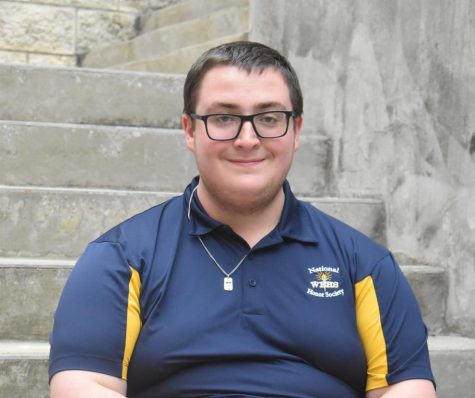Robotics, engineering courses earn grant for 3D printer

photo credit: Candice Lawrence
3D love \\ Senior Collin Kaiser and sophomore Cade Swanson celebrate their new 3D printer by hugging it in Mrs. Lawrence’s engineering class.
September 3, 2019
The grant had 1,688 schools qualify for final review. East’s Robotics and Engineering courses were one of the few chosen for a grant to purchase a $2000 3D printer.
The GE Additive Education program and grant provide high quality 3D printers to schools who qualify by sending in work samples and answering a series of questions about the school.
“The overarching idea is to spread excitement for STEM and to create sustainable products for the future,” Mrs. Candice Lawrence, director of the Robotics and Engineering program, said.
According to Mrs. Lawrence, the grant does not come without responsibility; a team of students has to create “3D Products” for elementary and middle school students across the nation to make new products that fulfill a certain criteria.
“The theme of the products is to aid in sustainability engineering, specifically problems within an ecosystem,” Mrs. Lawrence said.
She was challenged by the grant to find a group of high school students from both here and Wylie High School with skills in engineering, 3D design and manufacturing. Sophomore Savannah Pinner and junior Kate Vinson from High, and sophomore Cade Swanson, senior Jordan Moore and senior Collin Kaiser from East were selected.
“I’m probably an intern because I am here 95 percent of the day, helping Mrs. Lawrence with projects,” Swanson said. “I don’t get anything from this. This is me helping others.”
Kaiser, and the other interns, will make a portfolio of their products with explanations for grant documentation, and even for college resumes.
“I’m very skilled in 3D modeling, design, printing and stuff like that,” Kaiser said. “I love it, and I’ll try to get a certification for it as soon as possible.”
The students will receive additional assignments throughout the year to make more products for elementary and middle school students across the nation. The younger students get 3D blueprints of the products without an explanation and have to solve certain problems with the tools they are given.
“They give us a criteria to make a product that is supposed to help younger students use 3D printers and solve problems with them,” Swanson said.
According to Mrs. Lawrence, the goal is to create energy affordable products for people to use on a daily basis, and to illuminate the energy problems of third world countries and the United States. If the program does well, it can earn more 3D printers.



Cameron Johnson • Mar 26, 2020 at 10:23 pm
He clearly likes it!
Also so glad that their season’s been great. I know they’ll do even better in the future!